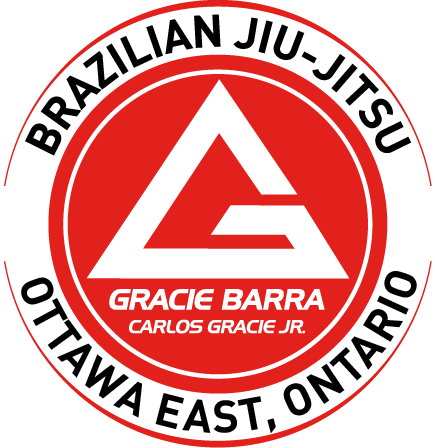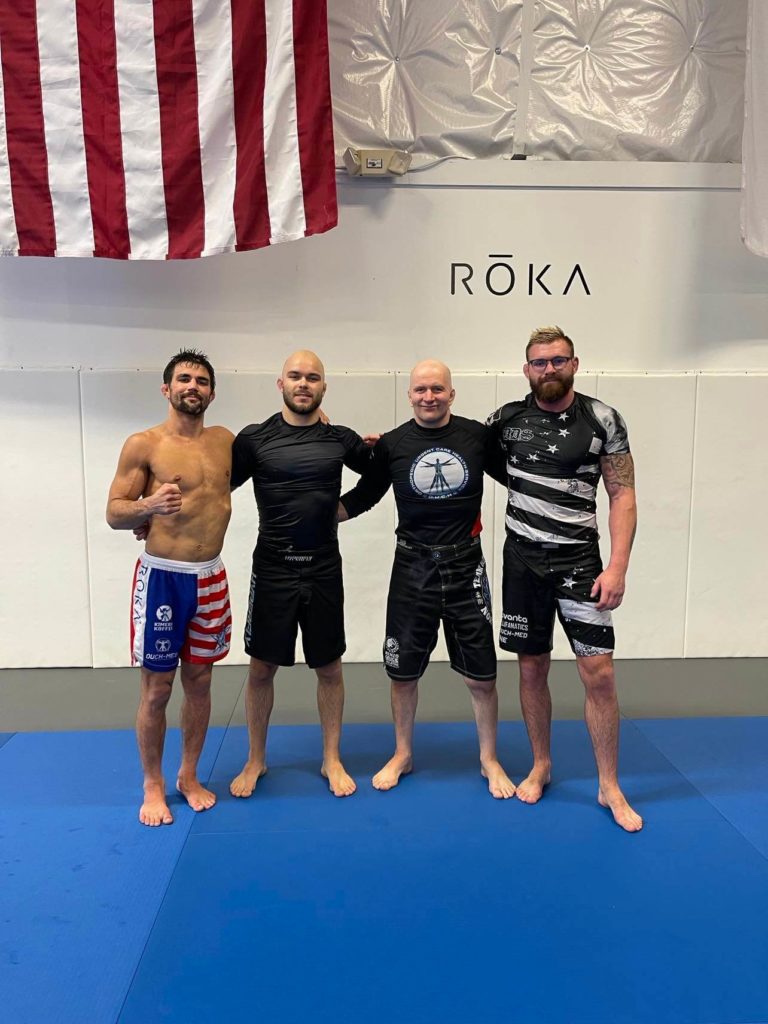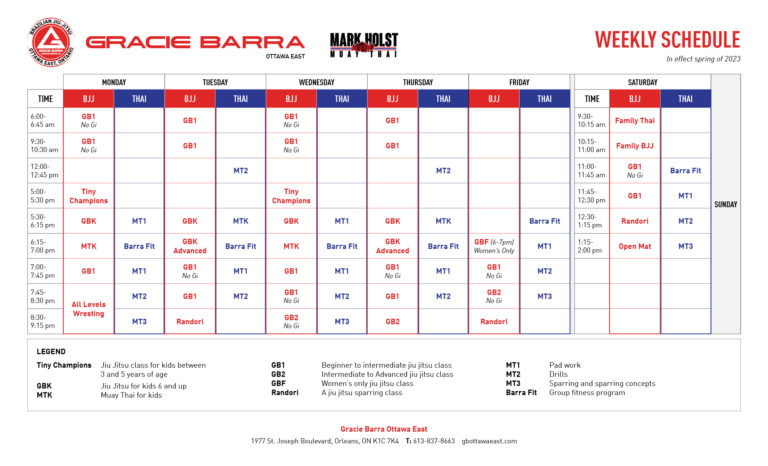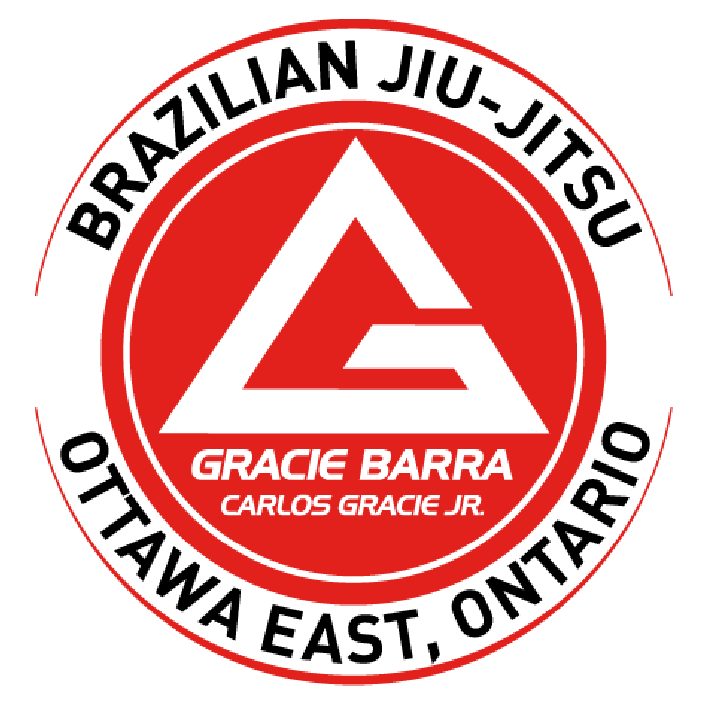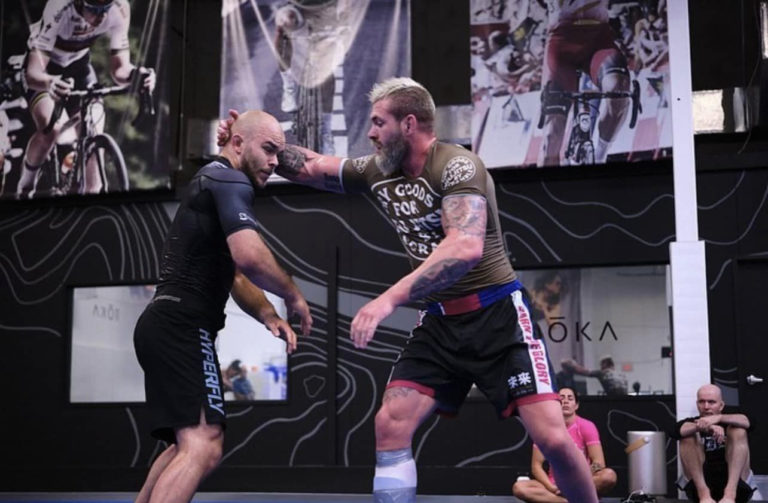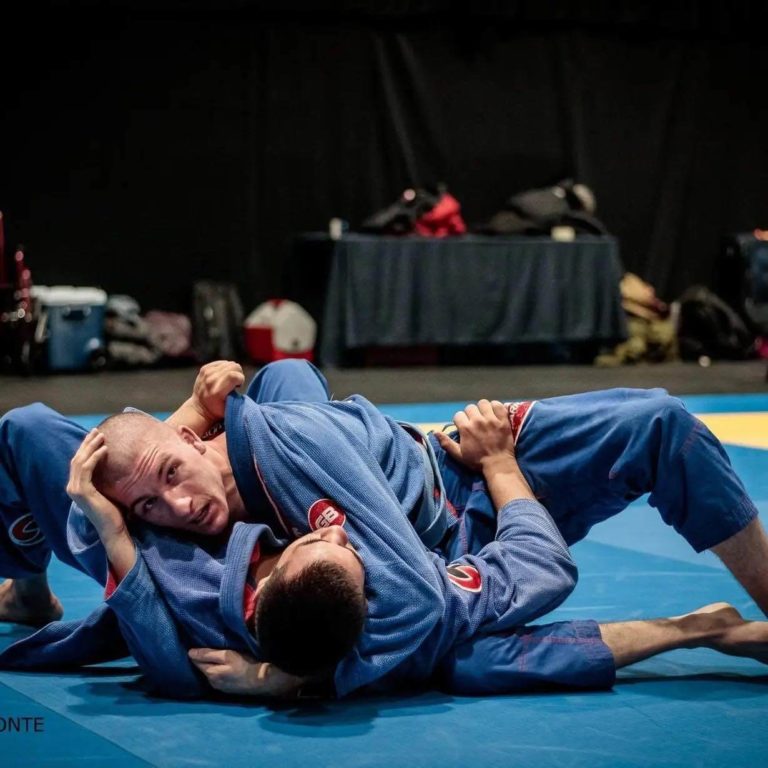The Multifaceted World of Brazilian Jiu-Jitsu
In the intricate tapestry of martial arts, Brazilian Jiu-Jitsu (BJJ) emerges as a captivating and dynamic discipline that transcends boundaries of age and gender. As a form of self-defence and sport, BJJ has gained widespread recognition for its emphasis on leverage, technique, and strategic thinking. This article delves into the multifaceted world of Brazilian Jiu-Jitsu, exploring its myriad benefits and the reasons individuals of all ages and genders are increasingly drawn to its practice. From embracing the art for personal empowerment to its inclusivity and adaptability, we navigate the diverse dimensions of BJJ. Furthermore, we shine a spotlight on the safety aspects of BJJ training, adopting a holistic perspective to dispel misconceptions and shed light on how this martial art fosters not just physical prowess, but also mental fortitude and a sense of community. Join us on this journey as we unravel the compelling reasons behind the growing popularity and universal appeal of Brazilian Jiu-Jitsu.
Brazilian Jiu-Jitsu (BJJ) is more than just a martial art; it’s a transformative journey that extends beyond the confines of the mat. Whether you’re a fitness enthusiast, someone seeking self-defence skills, or simply looking for a new and engaging hobby, BJJ offers a plethora of reasons to start training.
1. Effective Self-Defence:
BJJ focuses on ground fighting and submission holds, making it a highly effective martial art for self-defence. In real-life situations, knowing how to control an opponent on the ground can be crucial, especially when traditional striking techniques may not be practical.
2. Full-Body Workout:
BJJ is a demanding physical activity that engages every muscle in your body. The constant movement, grappling, and resistance training provide an intense workout, improving cardiovascular health, strength, and flexibility.
3. Mind-Body Connection:
BJJ requires a high level of mental focus and strategic thinking. As you learn various techniques and work to outmanoeuvre your opponent, you develop a strong mind-body connection, enhancing your overall cognitive abilities.
4. Problem-Solving Skills:
BJJ is often likened to a physical chess match. You must anticipate your opponent’s moves, plan your strategy, and adapt on the fly. This constant problem-solving aspect not only improves your skills on the mat but also carries over into your everyday life.
5. Stress Relief:
The physical intensity of BJJ training serves as an excellent stress reliever. The combination of rigorous exercise and the mental focus required can help you channel and manage stress effectively.
6. Builds Confidence:
As you progress in your BJJ journey, mastering techniques and overcoming challenges, you’ll naturally build confidence. The sense of accomplishment that comes with each belt promotion and successful roll translates into increased self-assurance in various aspects of life.
7. Community and Camaraderie:
BJJ fosters a strong sense of community among practitioners. The camaraderie developed on the mats creates a support system that goes beyond training partners – it becomes a network of like-minded individuals sharing a common passion.
8. Lifelong Learning:
BJJ is a continuously evolving martial art. There’s always something new to learn, whether you’re a beginner or an experienced practitioner. The pursuit of knowledge and improvement keeps the journey exciting and fulfilling.
9. Adaptability and Humility:
BJJ teaches humility through the experience of both winning and losing on the mat. It emphasizes adaptability and the importance of learning from mistakes, fostering a mindset that extends to daily life.
10. Fun and Enjoyment:
Finally, BJJ is undeniably fun. The dynamic nature of sparring, the satisfaction of executing a well-practiced move, and the overall enjoyment of the learning process make it a rewarding and enjoyable pursuit.
As we’ve explored the compelling reasons to embark on the Brazilian Jiu-Jitsu (BJJ) journey, it becomes evident that the allure of this martial art extends far beyond its individual benefits. Now, let’s shift our focus to the inclusive nature of BJJ, delving into how it has become a martial art for all ages and genders. From empowering children with discipline and respect to providing women with effective self-defence tools, Brazilian Jiu-Jitsu has transformed into a diverse and welcoming community that embraces practitioners from every walk of life. The journey into BJJ is not only about personal growth but also about fostering a sense of belonging in a martial arts world that truly caters to everyone.
Brazilian Jiu-Jitsu (BJJ) has gained immense popularity worldwide, transcending age and gender barriers. This martial art, rooted in Japanese Jiu-Jitsu and Judo, has evolved into a unique discipline that emphasizes technique, leverage, and strategy over brute strength. Its inclusive nature makes it an ideal choice for practitioners of all ages and genders.
1. Accessibility for All Ages:
Brazilian Jiu-Jitsu places a strong emphasis on technique and leverage, allowing practitioners to overcome physical limitations. This characteristic makes it an accessible martial art for individuals of all ages, from young children to seniors. BJJ classes are often structured to accommodate different skill levels and physical abilities, fostering a supportive environment for everyone.
2. Adaptability to Physical Differences:
Unlike some martial arts that heavily rely on striking and force, BJJ’s focus on ground grappling and submissions allows individuals with varying physical strengths to participate on equal footing. This adaptability promotes a sense of inclusivity, making it suitable for both men and women, regardless of their size or strength.
3. Empowerment for Women:
Brazilian Jiu-Jitsu has become particularly popular among women seeking effective self-defence techniques. BJJ’s emphasis on leverage and technique allows practitioners to neutralize larger opponents, empowering women with a practical set of skills to protect themselves. The supportive community within BJJ academies further encourages women to break through traditional gender stereotypes in martial arts.
4. Life Skills Development:
BJJ instils valuable life skills such as discipline, perseverance, and problem-solving. These qualities are beneficial for individuals of all ages, helping them navigate various challenges both on and off the mats. The structured nature of BJJ training also contributes to improved physical fitness, enhancing overall well-being.
5. Community and Camaraderie:
Brazilian Jiu-Jitsu academies often foster a sense of community and camaraderie among practitioners. The collaborative nature of sparring and training partnerships creates a supportive environment where everyone, regardless of age or gender, can learn and grow together. This sense of belonging enhances the overall experience and longevity of participation in the sport.
6. Mind-Body Connection:
BJJ emphasizes the importance of mental acuity and strategic thinking alongside physical prowess. This holistic approach to training appeals to individuals seeking a martial art that engages both the mind and body. The mental aspects of BJJ make it a fulfilling pursuit for practitioners of all backgrounds and ages.
Having established Brazilian Jiu-Jitsu (BJJ) as a martial art with universal appeal, accommodating practitioners of all ages and genders, we now turn our attention to a critical aspect often overlooked—the safety of BJJ training. As we navigate the diverse and inclusive landscape of BJJ, it becomes imperative to examine the holistic perspective on safety within the discipline. Beyond the physical techniques and mental fortitude cultivated on the mats, understanding the safety measures and practices within Brazilian Jiu-Jitsu is essential to appreciating the art’s full spectrum. Join us as we explore the ways in which BJJ prioritizes the well-being of its practitioners, ensuring a training environment that fosters growth, resilience, and overall safety.
Brazilian Jiu-Jitsu (BJJ) has gained immense popularity worldwide for its effective self-defence techniques and dynamic grappling manoeuvres. Beyond its martial arts prowess, one crucial aspect that often goes underappreciated is the safety of BJJ training. Let’s explore the various elements that contribute to the overall safety of practicing Brazilian Jiu-Jitsu.
1. Controlled Environment:
BJJ training takes place in controlled environments such as academies or dojos where experienced instructors oversee the sessions. The structured nature of classes ensures that practitioners follow a curriculum designed to gradually introduce techniques, allowing for a smooth progression in skill development. Instructors play a pivotal role in maintaining a safe learning atmosphere by emphasizing proper form and technique.
2. Focus on Technique:
One of the hallmarks of BJJ is the emphasis on technique over brute strength. Unlike some other martial arts, BJJ encourages practitioners to rely on leverage, timing, and body positioning rather than sheer force. This focus on finesse not only makes BJJ more effective in real-life situations but also significantly reduces the risk of injuries during training.
3. Progressive Learning:
BJJ academies typically structure their classes to cater to individuals of all skill levels. Beginners are introduced to fundamental movements and positions, gradually progressing to more advanced techniques as they gain experience. This gradual learning approach minimizes the likelihood of injuries as practitioners develop a solid foundation before engaging in more complex manoeuvres.
4. Sparring with Control:
Sparring, or rolling, is a fundamental aspect of BJJ training. However, it is done with an emphasis on control and respect for one’s training partner. Practitioners are taught to apply techniques with precision and care, reducing the risk of accidental injuries. The culture within the BJJ community promotes mutual respect and prioritizes the safety of training partners.
5. Physical Fitness:
BJJ training promotes overall physical fitness, which contributes to injury prevention. Regular practice enhances flexibility, strength, and cardiovascular health. A well-conditioned body is more resilient to injuries, and the holistic nature of BJJ training ensures that practitioners develop balanced physical attributes.
6. Supportive Community:
The BJJ community is known for its inclusivity and supportive atmosphere. Practitioners often form strong bonds with their training partners, creating an environment where safety and well-being are paramount. This sense of community encourages individuals to communicate openly about their physical limitations or concerns, fostering a collaborative approach to training.
7. Injury Awareness and Prevention:
BJJ academies prioritize injury awareness and prevention. Instructors educate students on common injuries, their causes, and preventive measures. Warm-up routines, cool-down exercises, and drills specifically designed to enhance joint stability are integral components of BJJ training, reducing the risk of injuries over time.
In conclusion, Brazilian Jiu-Jitsu stands out not only for its effectiveness in self-defence but also for the safety measures ingrained in its training philosophy. From controlled environments and progressive learning to a focus on technique and a supportive community, BJJ prioritizes the well-being of its practitioners. As with any physical activity, responsible practice and adherence to safety guidelines are essential, ensuring a fulfilling and injury-free journey in the world of Brazilian Jiu-Jitsu.
In the dynamic world of Brazilian Jiu-Jitsu (BJJ), where the art transcends individual motivations, embraces diverse practitioners of all ages and genders, and prioritizes safety as a cornerstone, the journey proves to be far more than a physical pursuit. As we explored the reasons to embark on this transformative path, celebrated BJJ’s inclusivity, and delved into the comprehensive safety measures within the discipline, a collective narrative emerges. Brazilian Jiu-Jitsu is more than a martial art—it is a holistic journey fostering personal growth, mental resilience, and a sense of community. Beyond the mats, BJJ instils discipline, empowers individuals of various backgrounds, and ensures a safe space for practitioners to learn and thrive. As we conclude our exploration, the heart of BJJ beats not just with the rhythm of combat but with the pulse of a vibrant and supportive community, inviting individuals of all walks of life to embrace the art and reap its multifaceted rewards. Whether you are a seasoned practitioner or a curious beginner, Brazilian Jiu-Jitsu offers not only a set of techniques but a pathway to self-discovery, camaraderie, and a lifelong journey of continuous improvement.
